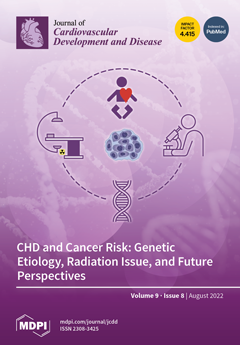Background: Myocardial T2* mapping at 1.5T remains the gold standard, but the use of 3T scanners is increasing. We aimed to determine the conversion equations in different scanners with clinically available, vendor-provided T2* mapping sequences using a phantom and evaluated the feasibility of
[...] Read more.
Background: Myocardial T2* mapping at 1.5T remains the gold standard, but the use of 3T scanners is increasing. We aimed to determine the conversion equations in different scanners with clinically available, vendor-provided T2* mapping sequences using a phantom and evaluated the feasibility of the phantom-based conversion method. Methods: T2* of a phantom with FeCl
3 (five samples, 3.53–20.09 mM) were measured with 1.5T (MR-A1) and 3T scanners (MR-A2, A3, B), and the site-specific equation was determined. T2* was measured in the interventricular septum of three healthy volunteers at 1.5T (T2*
1.5T, MR-A1) and 3T (T2*
3.0T, MR-B). T2*
3.0T was converted based on the equation derived from the phantom (T2*
eq). Results: R2* at 1.5T and 3T showed linear association, but a different relationship was observed according to the scanners (MR-A2, R2*
1.5T = 0.76 × R2*
3.0T − 2.23,
R2 = 0.999; MR-A3, R2*
1.5T = 0.95 × R2*3.0T − 34.28,
R2 = 0.973; MR-B, R2*
1.5T = 0.76 × R2*
3.0T − 3.02,
R2 = 0.999). In the normal myocardium, T2*
eq and T2*
1.5T showed no significant difference (35.5 ± 3.5 vs. 34.5 ± 1.2,
p = 0.340). The mean squared error between T2*
eq and T2*
1.5T was 16.33, and Bland–Altman plots revealed a small bias (−0.94, 95% limits of agreement: −8.86–6.99). Conclusions: a phantom-based, site-specific equation can be utilized to estimate T2* values at 1.5T in centers where only 3T scanners are available.
Full article






